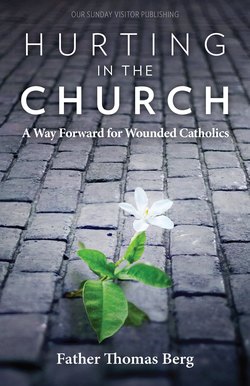Читать книгу Hurting in the Church - Fr. Thomas Berg - Страница 14
ОглавлениеChapter 3
A Heart-to-Heart about Catholic Priests
“Accept from the holy people of God the gifts to be offered to Him. Know what you are doing, and imitate the mystery you celebrate: model your life on the mystery of the Lord’s cross.”
—From the Rite of Priestly Ordination
Where to begin?
In light of the preceding chapter, it bears repeating that by far the vast majority of Catholic priests have never sexually abused anyone. Our thoughts should turn to that throng of priests, past and present, who have sought to live in earnest fidelity to the commitments they made the day of their ordination, priests who have striven for genuine holiness against great odds and amidst countless obstacles.
So, dare I begin this chapter with an expression of gratitude? That may sound self-serving, as I am a Catholic priest. But take it rather as the expression of my own lifelong admiration for these men who in so many ways have been my personal heroes, and who rendered me the greatest service a human person could ever offer by placing me sacramentally and existentially in touch with the Mystery of Christ.
Priests can also be, in very personal, often undisclosed ways, some of the most hurting persons in the Church today—much more than most of our lay brothers and sisters can imagine.
At the top of the list we would have to locate the reality of false accusations of sexual misconduct against priests who see their good name trampled upon and destroyed.10 Up there as well are the chasms of distrust that have opened up between priests and their bishops in the last decade. This has been an unintended but very real side effect of the bishops’ efforts to implement new policies for handling allegations of sexual abuse against priests over the past decade and a half.
Closely related we would have to acknowledge the low priestly morale in some dioceses that is seldom effectively addressed; the dysfunctionality inherent in too many chancery offices; the attitude of some bishops who treat their priests as something less than collaborators in ministry, who are distant, calculating, and utilitarian, who treat their priests with an air of suspicion. I think, for example, of an archbishop (and later cardinal) who once, in rendering a legal deposition over abuse cases in his archdiocese, explained to the lawyers that the relationship of the priests to the archdiocese was not unlike that of “private contractors” to a corporation. The archbishop was obviously reaching for an analogy that the lawyers might understand, but the choice of analogies was revealing.
It has often struck me as well that referring to priests as “personnel”—although commonplace in most dioceses, as in “office of priest personnel” or “priest personnel board”—suggests that a bureaucratized, corporate mentality has come to characterize and dominate the internal cultures of our chanceries. It’s a far cry from a very different model suggested to us in the New Testament, that of the presbyters gathered with their bishop and the local community of disciples in prayer (see Acts 20:17-38).
Beyond these forms of hurt, there are the ubiquitous faults, deficiencies, and quirks that sadly pervade the internal culture of communities of priests themselves: the intrigue, backbiting, politics, oneupmanship, envy, and turf wars; the loneliness and lack of genuine fraternal interest in one another; the feeding off one another’s cynicism.
